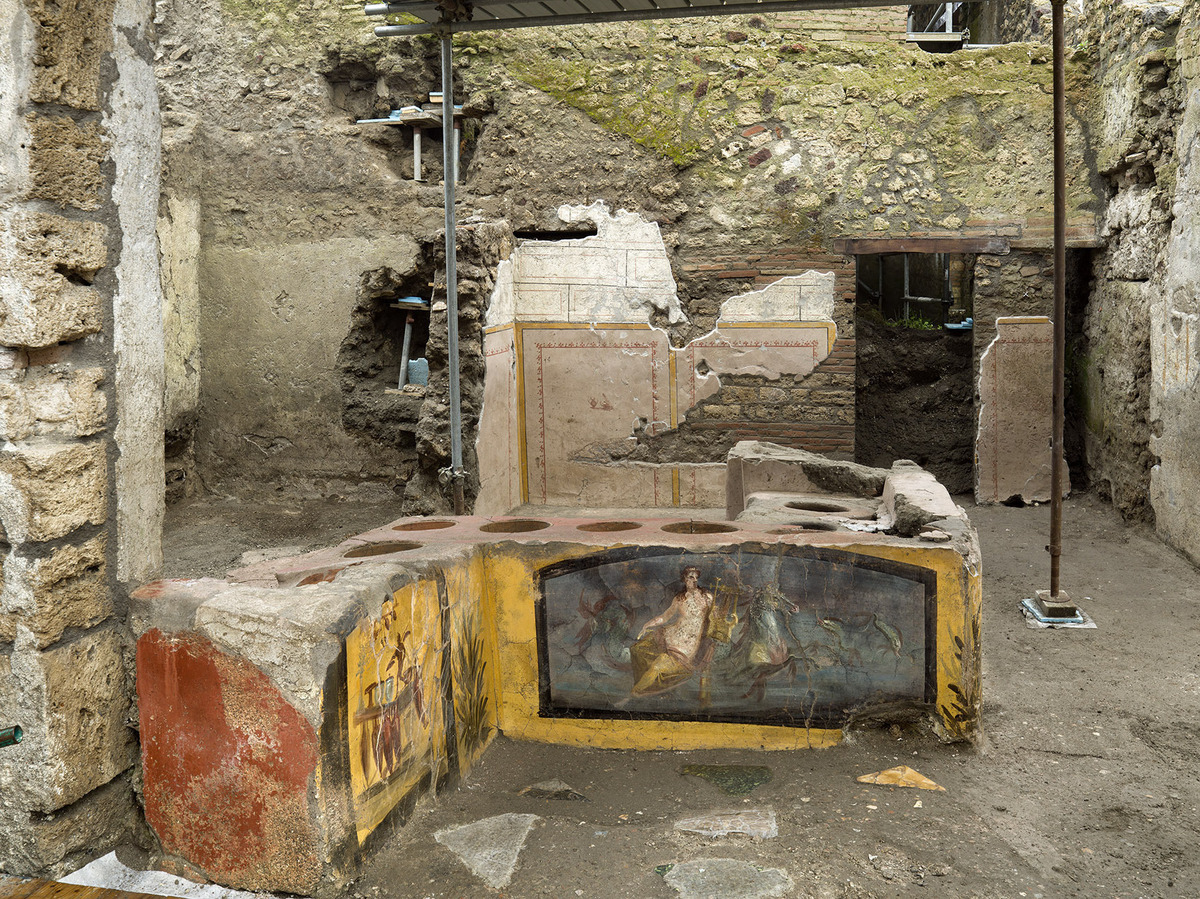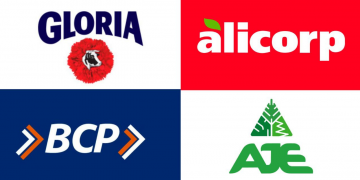Crédito: fuente
A fast-food eatery — or thermopolium — discovered at Pompeii has been completely excavated, helping to reveal some top dishes of the ancient Roman city. The site is about 18 miles southeast of Naples, Italy.
Luigi Spina/Archaeological Park of Pompeii via AP
hide caption
toggle caption
Luigi Spina/Archaeological Park of Pompeii via AP

A fast-food eatery — or thermopolium — discovered at Pompeii has been completely excavated, helping to reveal some top dishes of the ancient Roman city. The site is about 18 miles southeast of Naples, Italy.
Luigi Spina/Archaeological Park of Pompeii via AP
Ever wonder what a 2,000-year-old fast food restaurant might look like?
Well, new photos from researchers might give you an idea. Archaeologists said on Saturday they excavated a complete thermopolium — a Roman food counter — in the ancient city of Pompeii.
Researchers are analyzing the findings to create a more complete picture of the daily life — and diet — of a person in Pompeii.
«As well as being another insight into daily life at Pompeii, the possibilities for study of this Thermopolium are exceptional, because for the first time an area of this type has been excavated in its entirety,» Massimo Osanna, interim director general of the Archaeological Park of Pompeii, said in a statement.
Archaeologists have made discoveries in Pompeii, about 18 miles southeast of Naples, for centuries. The community was buried in ash and pumice when Mount Vesuvius erupted in A.D. 79, killing at least hundreds of people. The remains of two humans were found inside the stall.
But the ash preserved items showing everyday life of the city’s inhabitants, serving as an archeological gold mine.
These types of food stalls were common in Rome, and researchers have discovered 80 in Pompeii. But this stall was the first to be excavated in its entirety.
So what’s on the menu for an ancient Roman street food vendor? The researchers found remnants of duck, goat, pig, fish and snails in earthen pots, sometimes combined in the same dish.
The storekeeper lowered the pots of hot food into circular holes in the counter. Crushed beans were found in a jar, likely used to modify the taste and color of wine.

A painting adorns a counter of a thermopolium, depicting two upside-down mallard ducks and a rooster.
Luigi Spina/Archaeological Park of Pompeii via AP
hide caption
toggle caption
Luigi Spina/Archaeological Park of Pompeii via AP

A painting adorns a counter of a thermopolium, depicting two upside-down mallard ducks and a rooster.
Luigi Spina/Archaeological Park of Pompeii via AP
Researchers discovered paintings of animals — including a rooster and ducks — possibly a menu to indicate some of the food sold at the stall. Archaeologists also found ceramic jars, wine flasks, amphora and a bronze patera — a drinking bowl.
A cistern, fountain and water fountain sit in the small square in front of the former business. And a painting of a sea nymph riding a sea-horse decorates the counter.

A painting of a sea nymph riding a sea-horse adorns one of the counters in the thermopolium.
Luigi Spina/Archaeological Park of Pompeii via AP
hide caption
toggle caption
Luigi Spina/Archaeological Park of Pompeii via AP

A painting of a sea nymph riding a sea-horse adorns one of the counters in the thermopolium.
Luigi Spina/Archaeological Park of Pompeii via AP
Another illustration appears to be a depiction of the stall itself, almost like a logo or trademark.
The researchers say this is only the beginning of discoveries they made from the stall. More will be uncovered as the excavation continues and researchers run tests.
«The finds will be further analysed in the laboratory,» Osanna wrote in the statement, «and in particular those remains found in the dolia (terracotta containers) of the counter are expected to yield exceptional data for informing an understanding of what was sold and what the diet was like.»

The thermopolium features several paintings like this one in the Pompeii archeological park.
Luigi Spina/Archaeological Park of Pompeii via AP
hide caption
toggle caption
Luigi Spina/Archaeological Park of Pompeii via AP

The thermopolium features several paintings like this one in the Pompeii archeological park.
Luigi Spina/Archaeological Park of Pompeii via AP








